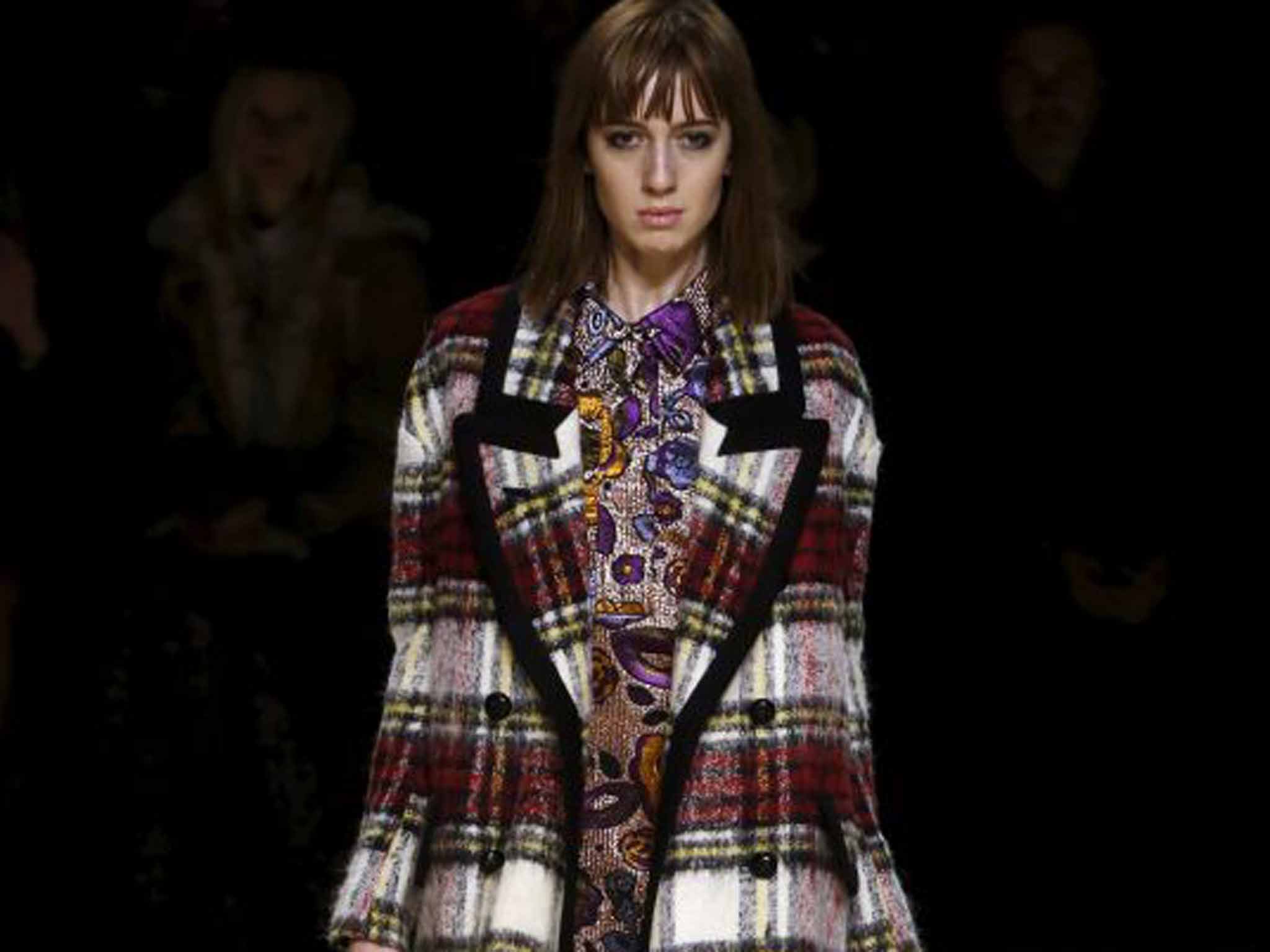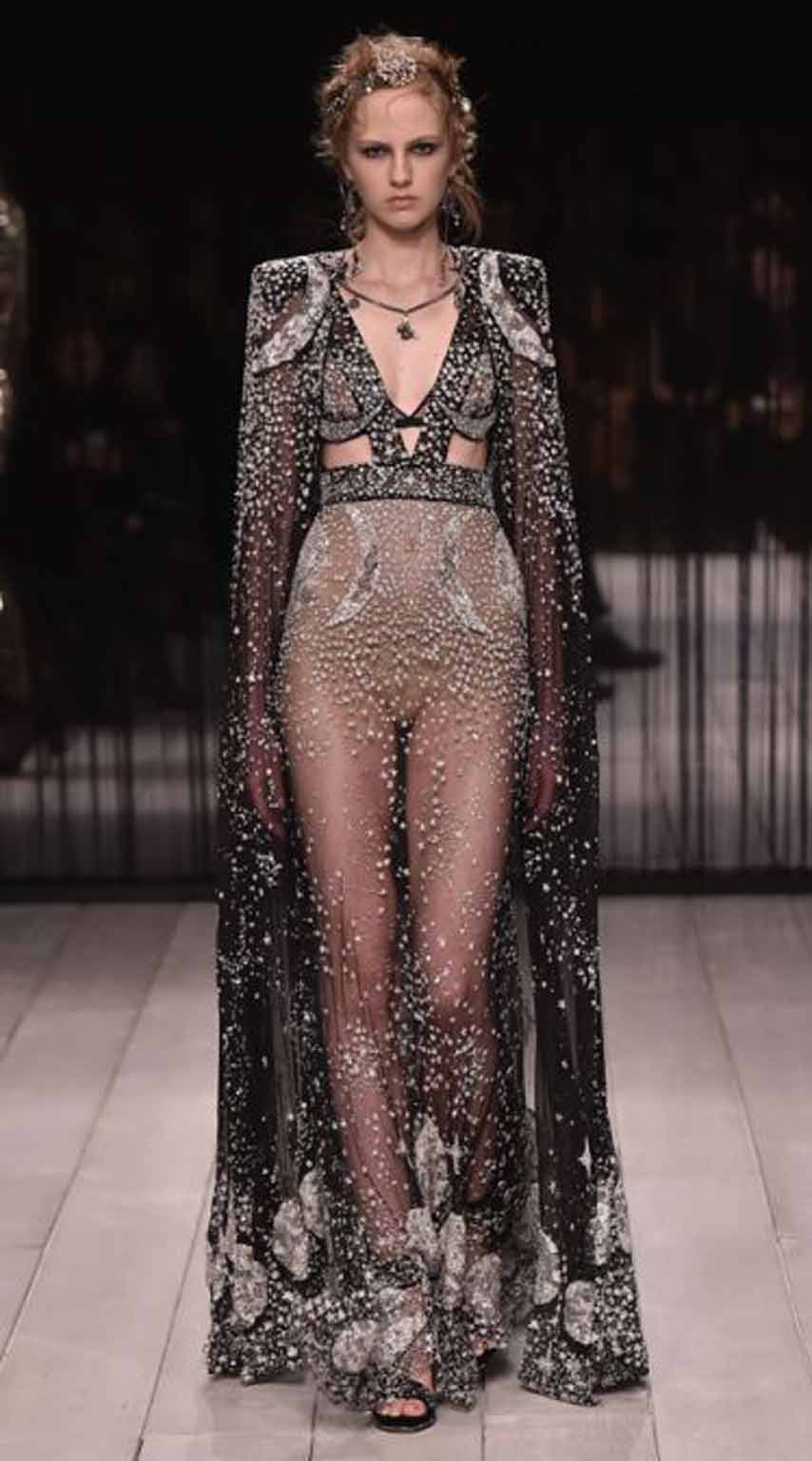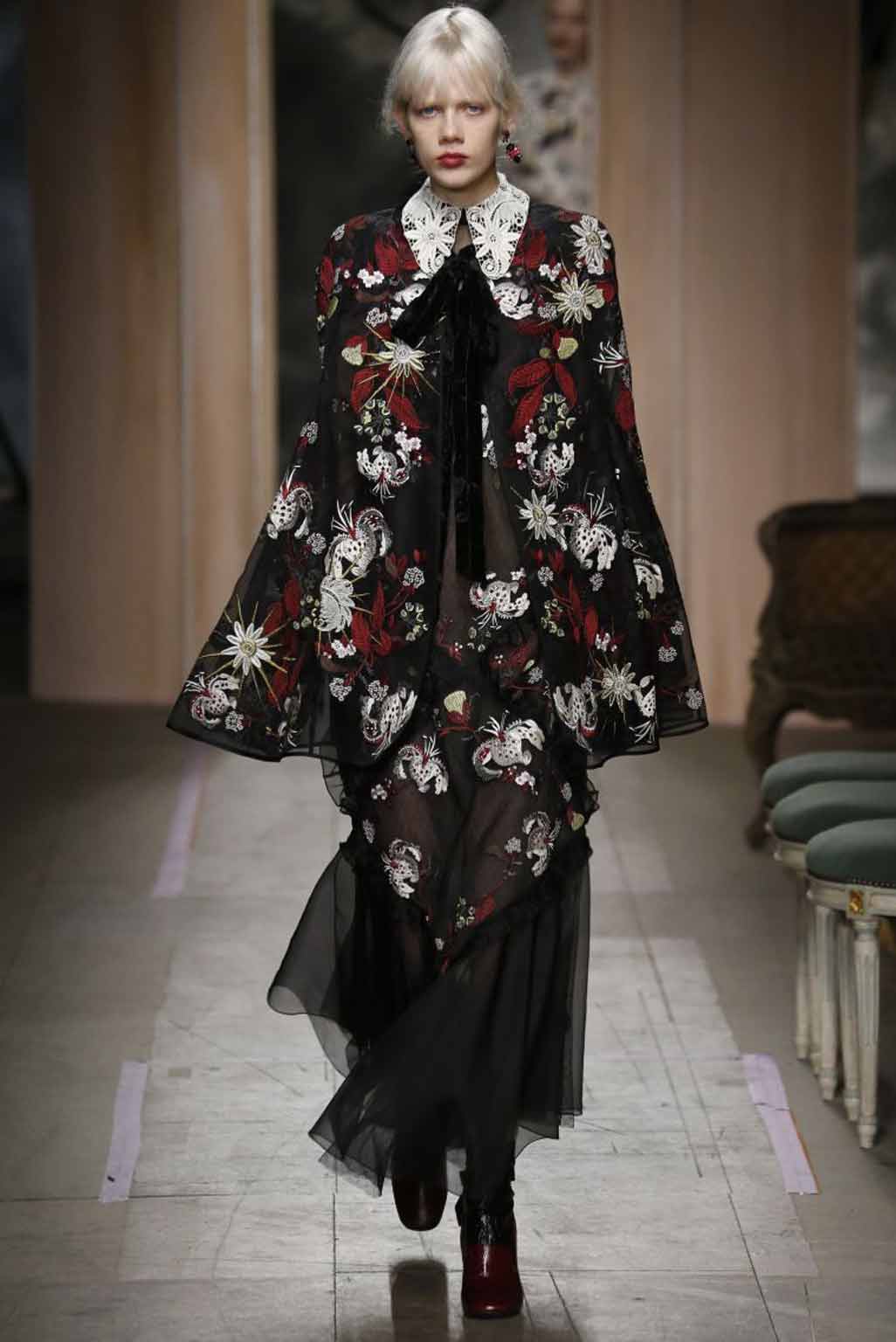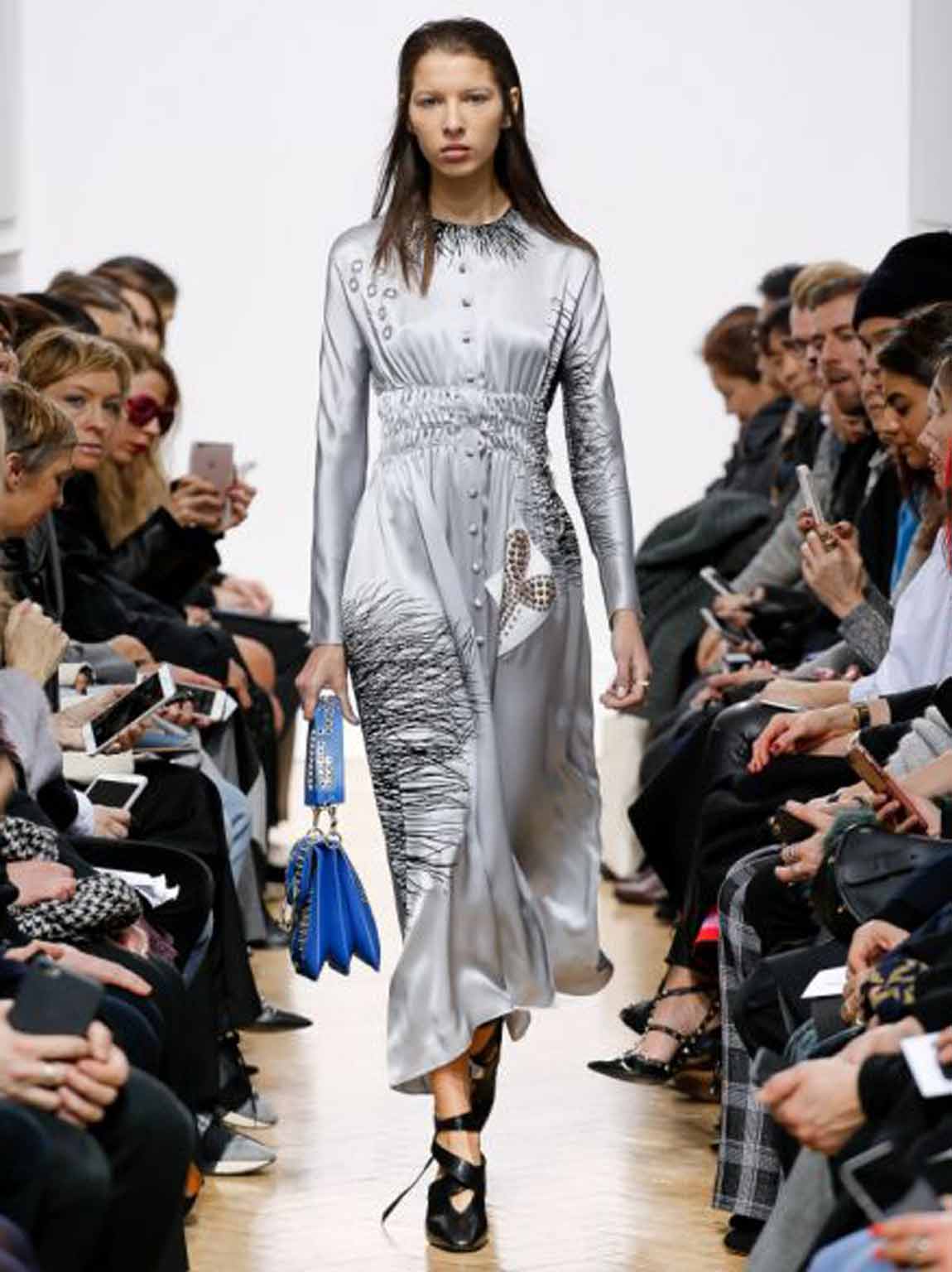London Fashion Week: Collections highlighted a fashion industry in flux, battling the twin demands of creativity and commerce

Your support helps us to tell the story
From reproductive rights to climate change to Big Tech, The Independent is on the ground when the story is developing. Whether it's investigating the financials of Elon Musk's pro-Trump PAC or producing our latest documentary, 'The A Word', which shines a light on the American women fighting for reproductive rights, we know how important it is to parse out the facts from the messaging.
At such a critical moment in US history, we need reporters on the ground. Your donation allows us to keep sending journalists to speak to both sides of the story.
The Independent is trusted by Americans across the entire political spectrum. And unlike many other quality news outlets, we choose not to lock Americans out of our reporting and analysis with paywalls. We believe quality journalism should be available to everyone, paid for by those who can afford it.
Your support makes all the difference.Is there a seismic shift happening in fashion? Or is it all a storm in a teacup? There's something that feels unstable and mid-flux right now, designers uncertain as to what they should offer, what consumers may want. How is this uncertainty reflected on the catwalks? By a disparate offering, by logos and names changing and shifting, and by collections composed largely of the small stuff: handbags, shoes. Fragments of a whole.
That isn't what London is known for. London is about the big gesture, the grand scheme. But the autumn/winter 2016 collections feel bitty, composed of pieces to be pulled apart and individually digested rather than hearty, meaty fashion statements. JW Anderson described his looks as “snapshots”, saying that he wanted observers just to get a “sense” of the clothing – rather than something material to clutch onto. He didn't say the latter, but I felt it was implied. And you grabbed at bits of this show – at shirt-dresses bound with leather, at studded bags and glittering shoes, with a magpie sense of lust. The head-to-toe looks felt, if not redundant, then more of a backdrop to single pieces that excited. You didn't want to become this woman, but you wanted a bit of her.
Anderson is one of those creatives bucking against the existing system: his Loewe collections are presented in a Paris already plastered with advertising images for collections yet to be shown. The consuming public see it before the industry insiders – we only arrive in the city after they've been plastering billboards for about a week.
There's a kind of hollow desire in that: you can see, but you can't buy. Which is what lots of people are seeking to challenge. Burberry is the ringleader, collapsing well-defined categories together with alarming abandon – Christopher Bailey rolled CEO into his job as chief creative officer (that means designer, in corporate parlance) in May last year; this year, he lumped together the disparate, differently priced strata of the Burberry empire (labelled Brit, London and Prorsum), and just called them Burberry, straightforward and simple. As of September, he won't be talking in seasons any more, but just delivering two shows of clothes each year. The industry is abuzz: is it the end of fashion, or its next incarnation, a newer, better model?

I'm on the fence – because I like to think all this bullish corporate jargon of profit margins, sell-through and in-store drop shouldn't affect the creative side. It does, of course. But can't they be divorced, at least when it comes to the direction propositions of a catwalk show? It's impossible to subjugate the commercial to the creative – even Paris haute couture, those hand-made clothes with six-figure price-tags and barely 1,000 customers worldwide, feels the necessity to crow its financial viability today. However, the creative is easily subsumed by the demands of commerce. And that's the worry if designers start to fiddle about with the order of seasons and focus on delivering more clothes faster, rather than making them better. Because ultimately, better clothes are what will secure a designer's future, big or small.
Burberry may be rebranded, but Bailey isn't yet under the yoke of his own financial creation. Creatively, his autumn/winter 2016 collection was satisfying, in a way his previous offerings have missed. It was filled, like Anderson's with fragments of clothing you'd like to buy: a good coat, a studded, patchworked python shoe, a metallic dress. It's odd that Burberry has lopped the term “Prorsum” off its label. That's Latin for “forwards”, which is what their approach is. Like Anderson, Bailey is thinking not of the poetry of clothes, but of the product. He's not selling a dream, he's selling a dress. It's indicative of a new pragmatism, of head over heart. It slightly quashes the romance of the industry. But it shifts stock.
The flip-side? A clutch of collections with disparate but strong and original voices, vocal in their support of an old-fashioned way of working. Sarah Burton's tone at Alexander McQueen always seems plaintive, a hold-out against the might of a luxury behemoth (Kering, the owners of the label). This season, Burton's pregnancy shifted her show from Paris to London, for practical purposes only, rather than any perceived shift in inspiration or focus. And there was no overwrought nationalism, just a dreamy meander of over-the-top, out-of-left-field eveningwear that relates to nothing in particular, bar her own personal predilections for decoration and after-dark embellishment. It was, perhaps, a little restricted – no clothes for before five, no price-tags below several grand. But it was lovely enough, in its better parts, to make you dream of a life that would necessitate clothes like those. Maybe that'll be geared up to hawking a handbag or two. However, it wasn't the sole aim.

Models clutched handbags at Christopher Kane. They also wore plastic sheeting wrapped about their heads and trod out in clothes that resembled cardboard boxes and dishrags – lost and found, he called it, not meaning left luggage at a train station but another of those magpie eyes. It made you wonder if Kane had perhaps lost it, a little: it's his tenth anniversary and you remember collections that challenged notions of shape and taste, reconfiguring contemporary fashion with neon elastic or crushed velvets. This felt more like tinkering with surfaces – with blurry floral prints, furs, dresses dripping in feathers or jangling with gewgaws. However, by the end, he had found it. If this collection wasn't one of Kane's previously signature, singular, love-it-or-hate-it propositions, it was informed by a similar idea of taking the unloved and overlooked and elevating them to luxury, in turn challenging conventions the industry is cleaving to ever more conservatively.

Erdem Moralioglu's collection was similarly minded: set amongst a dusty cinematic mise en scène, snippets of Hitchcock's Rebecca on the soundtrack, remembrance of frocks past. The past frocks, however, were hazy memories rather than the direct references quoted by others, delicate fil coupé slips, capelets and bias gowns weighted down with sequins, panne velvet threaded with ribbon in faded dressing-up box shades of baby-blue, verdigris and mildew. They were old-fashioned – in a good way, not fustily. Yet they still worked, in abstraction. It would be easy to imagine a woman wearing them, wanting them, looking good. The litmus test, of both commerce and creativity. They made you sigh; they'll maybe make you buy. µ
Join our commenting forum
Join thought-provoking conversations, follow other Independent readers and see their replies
Comments